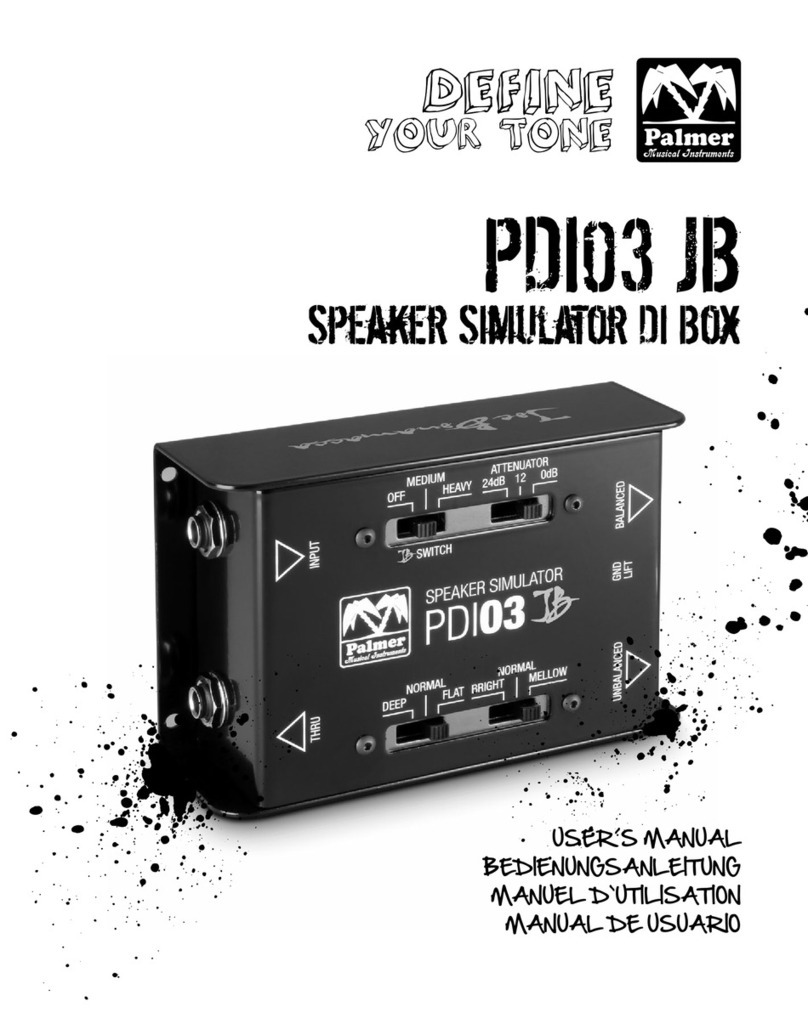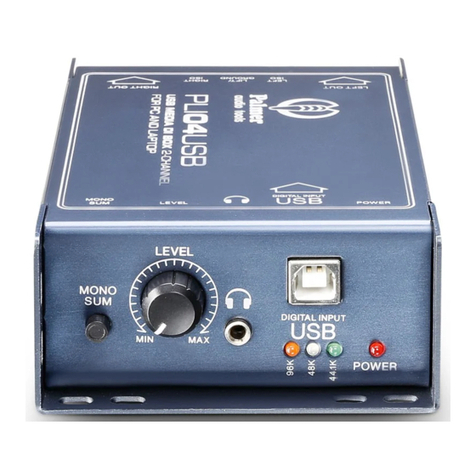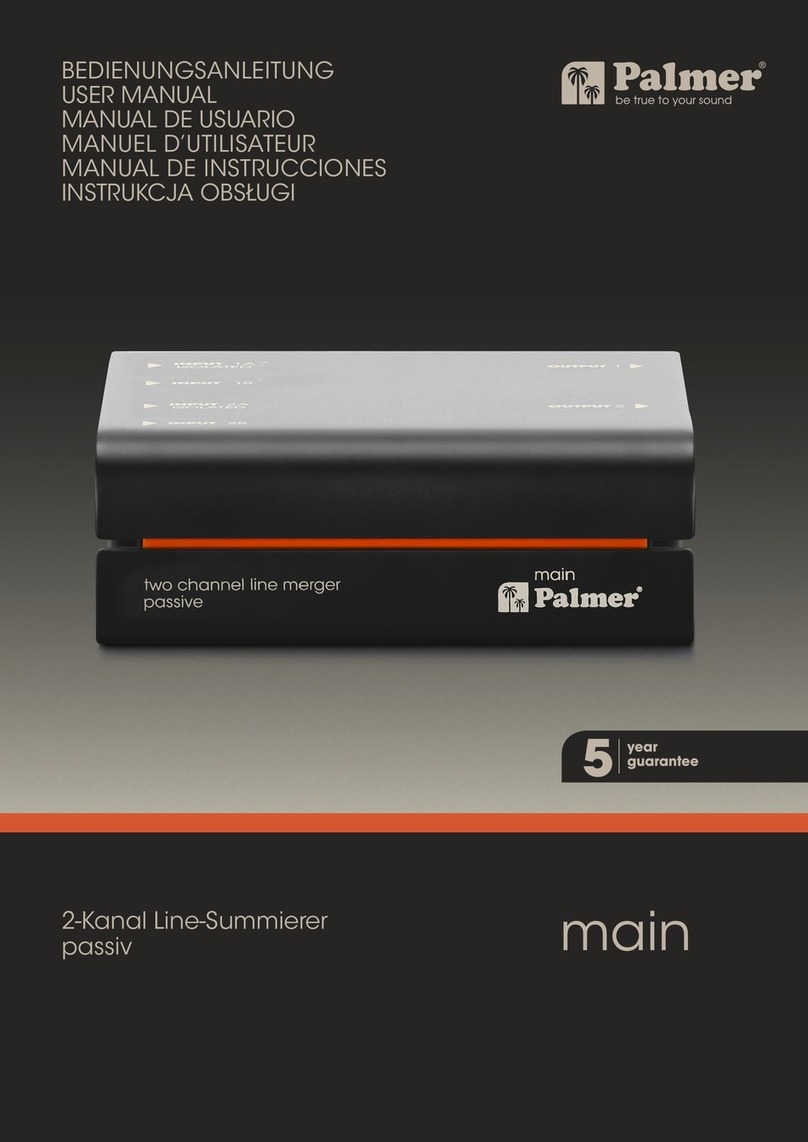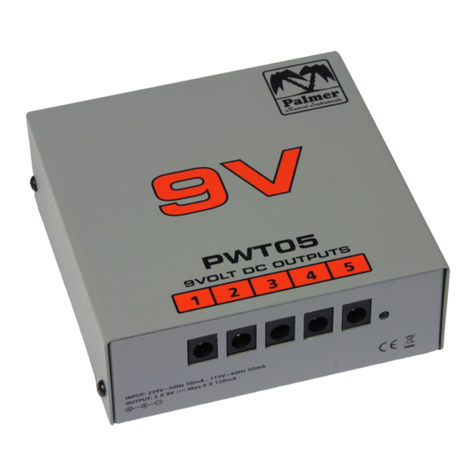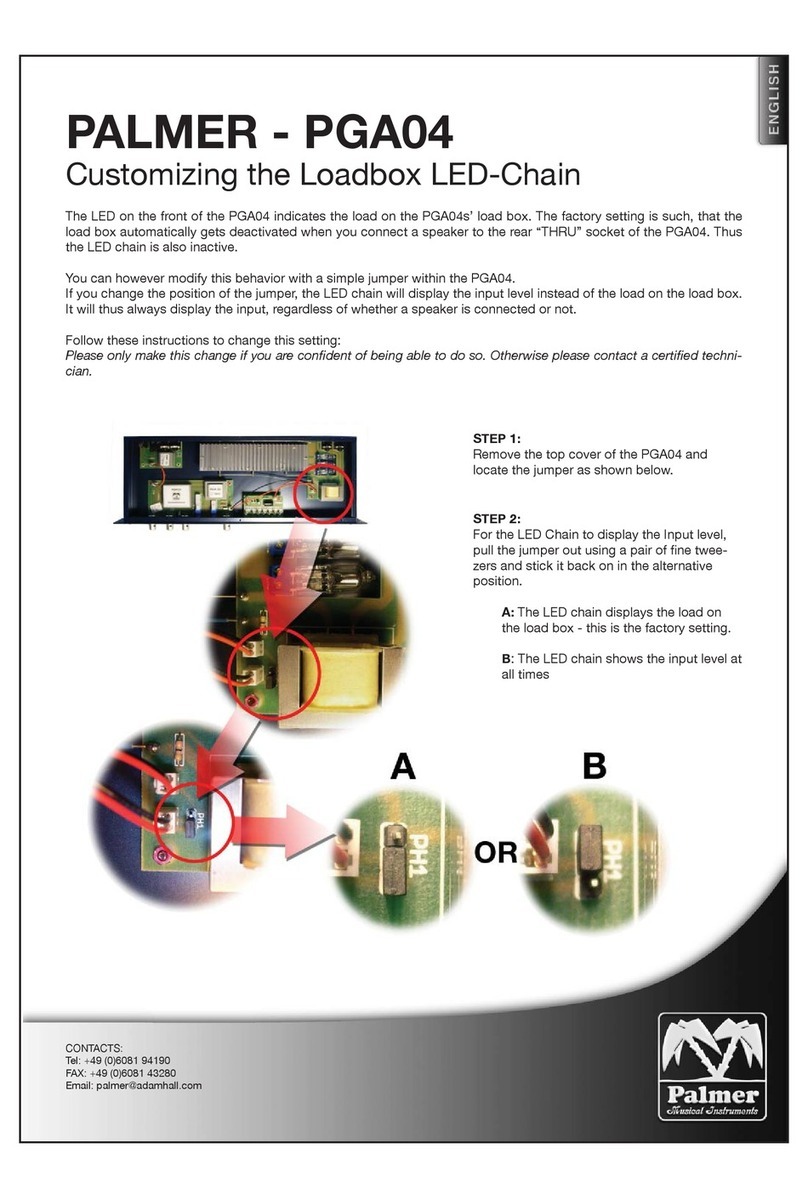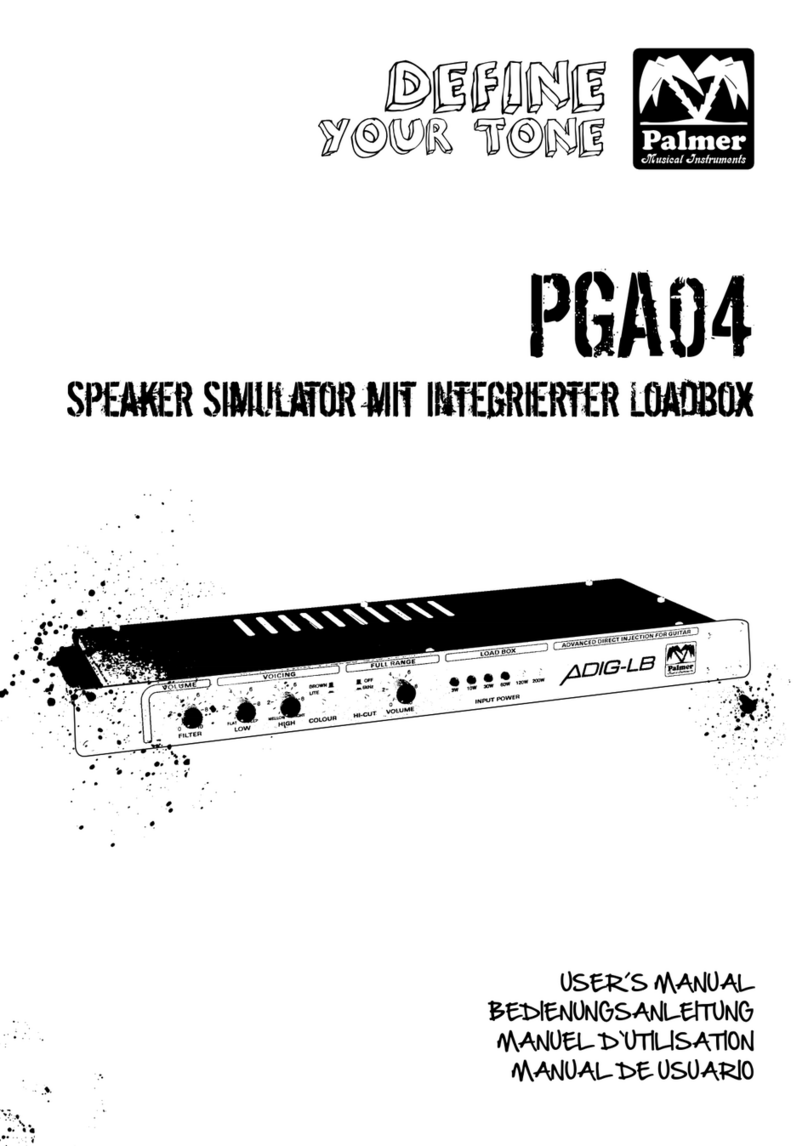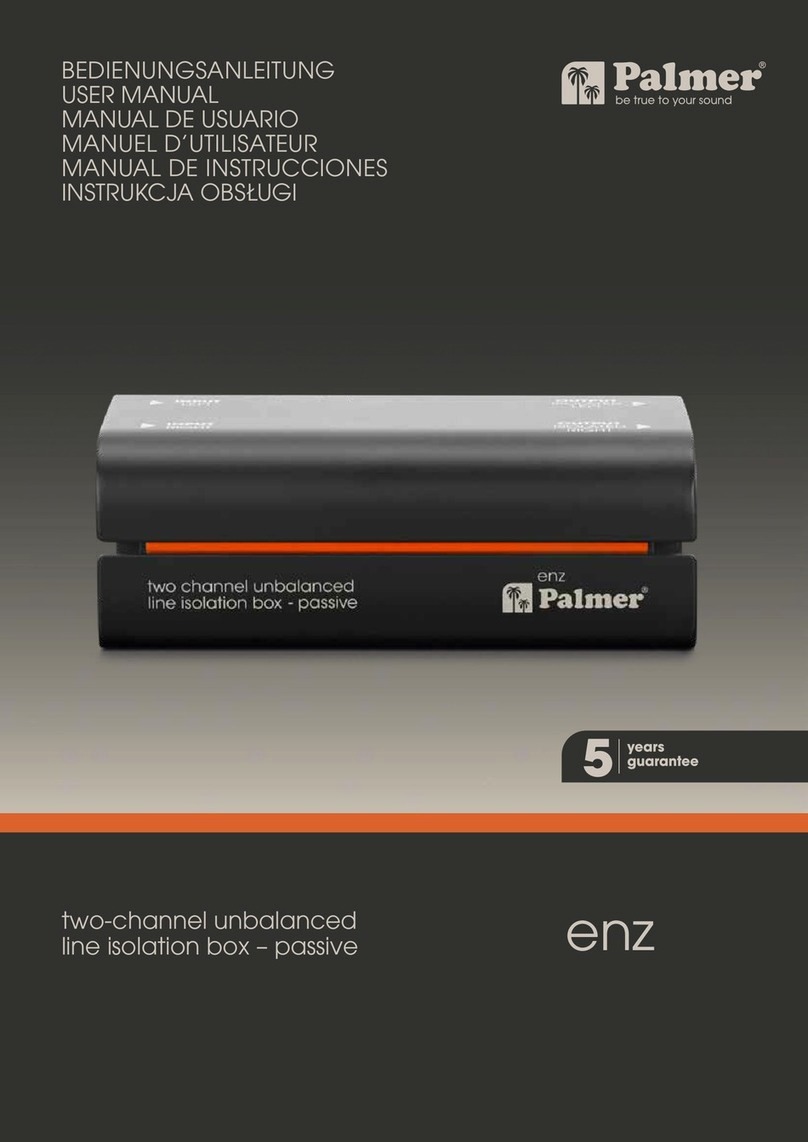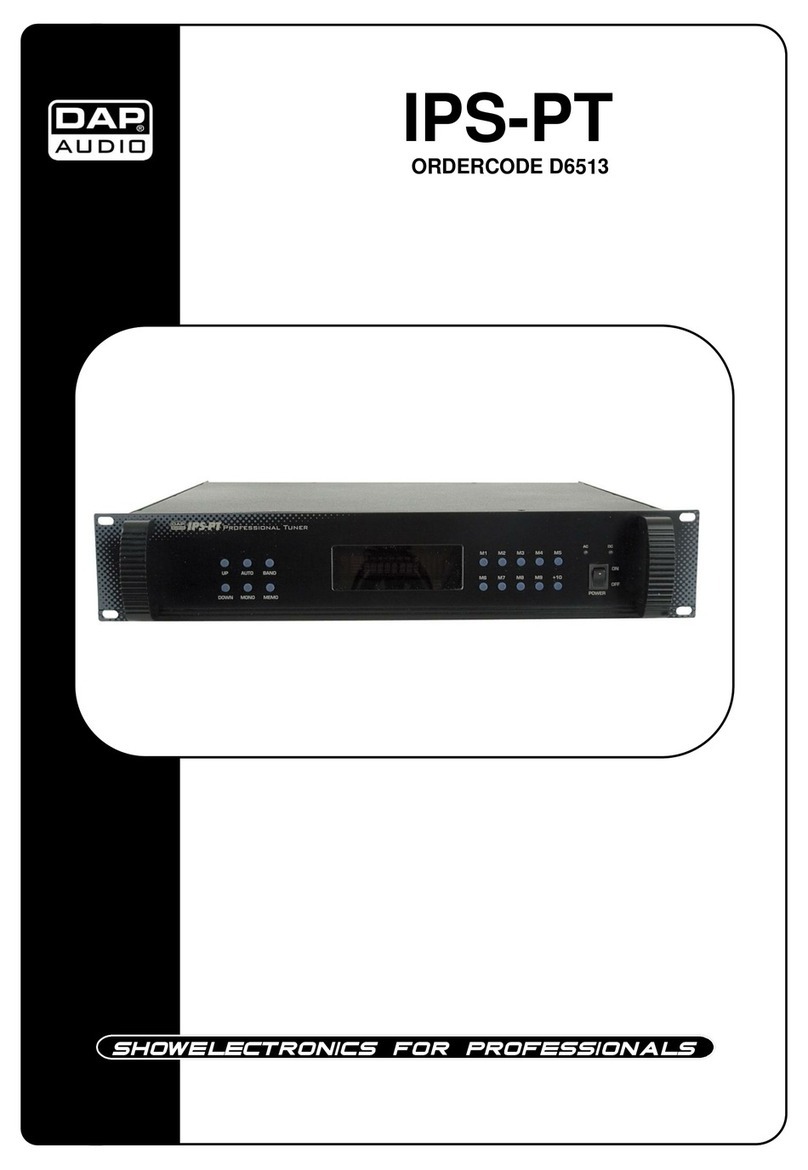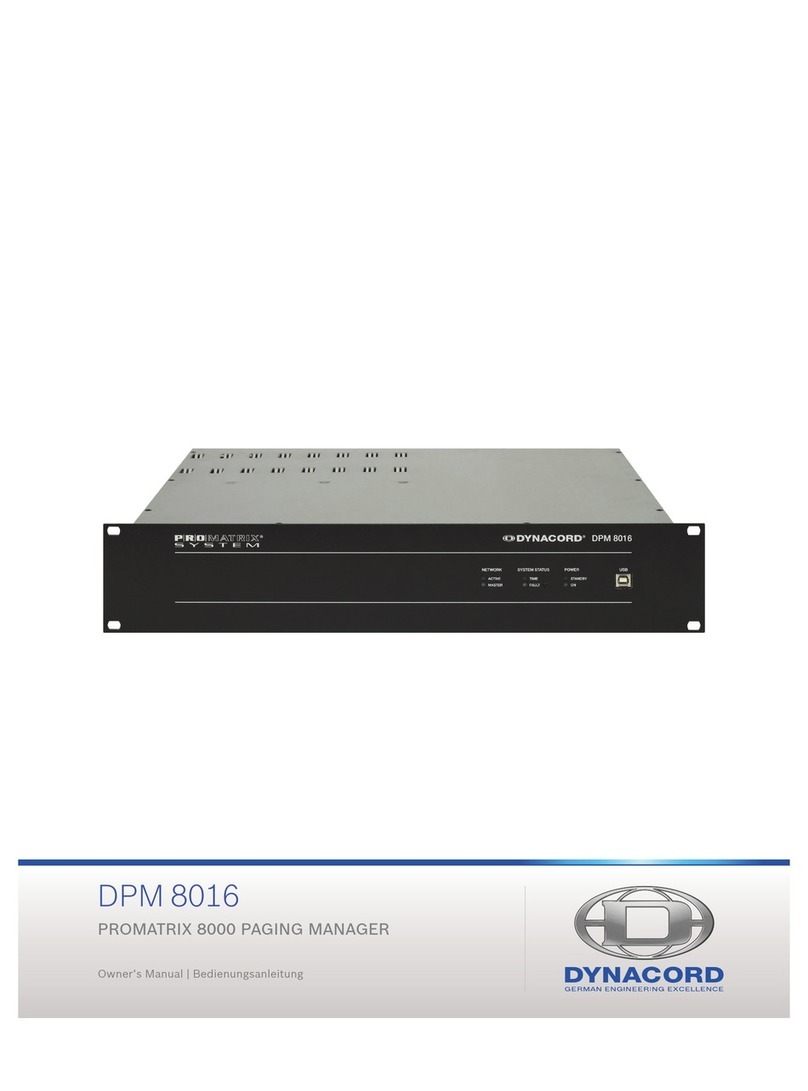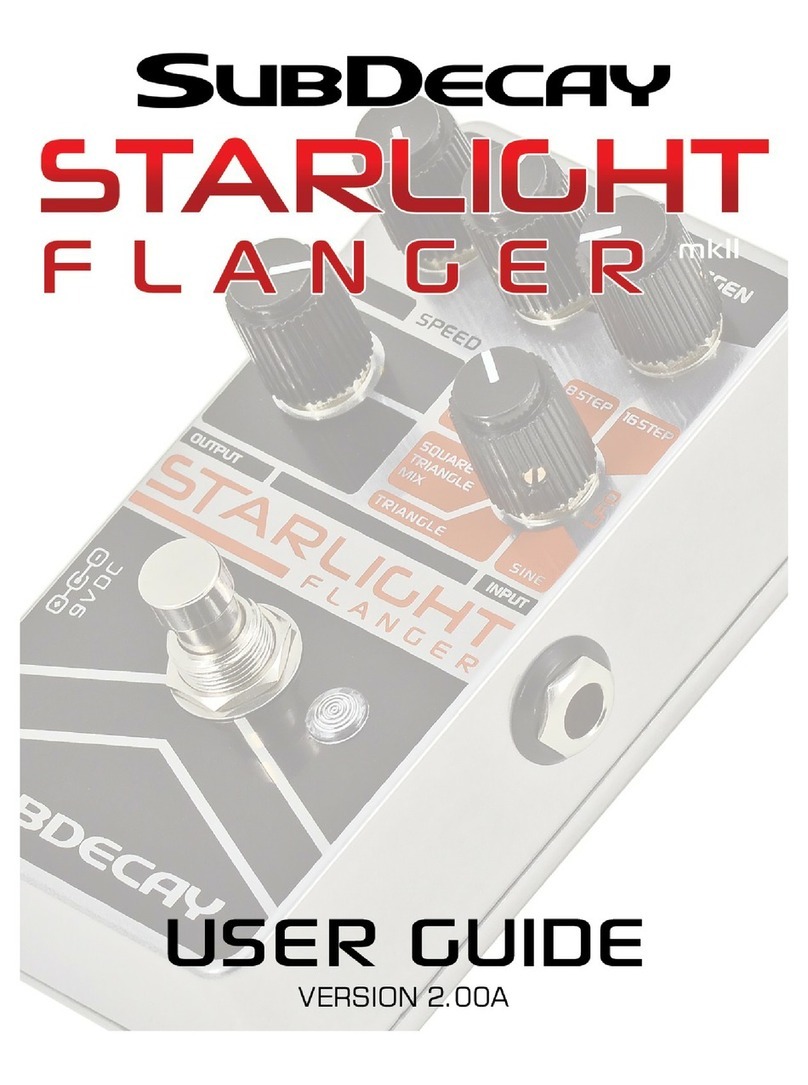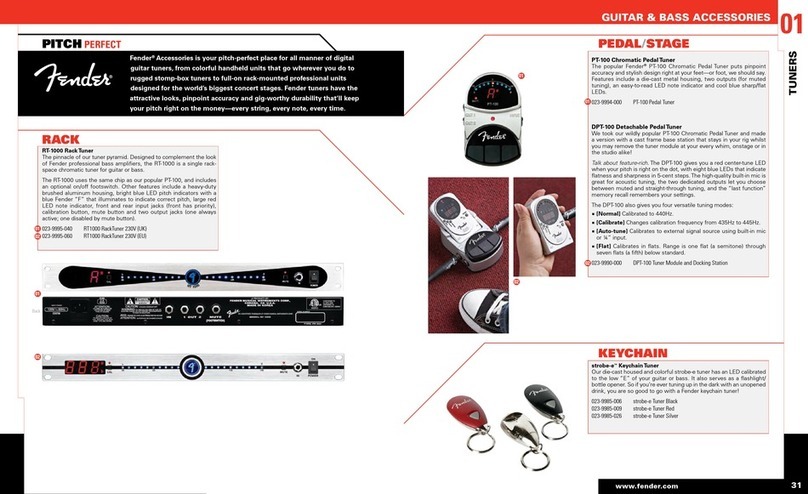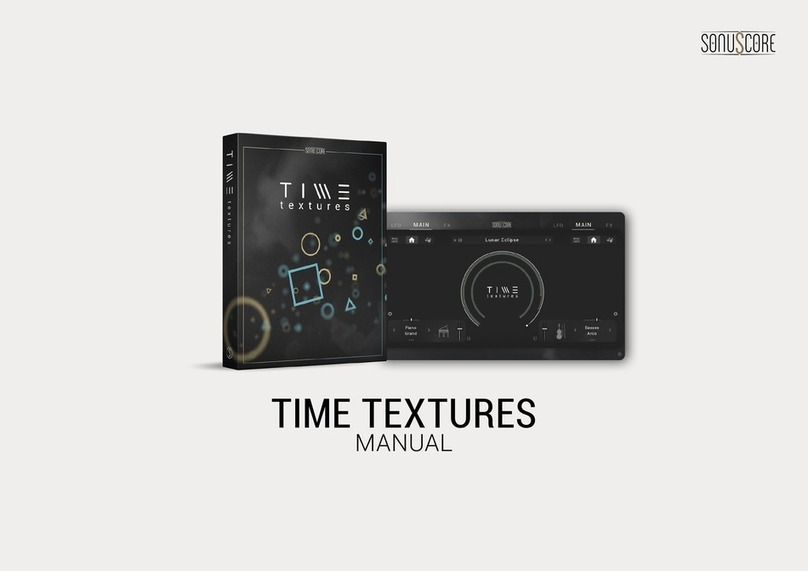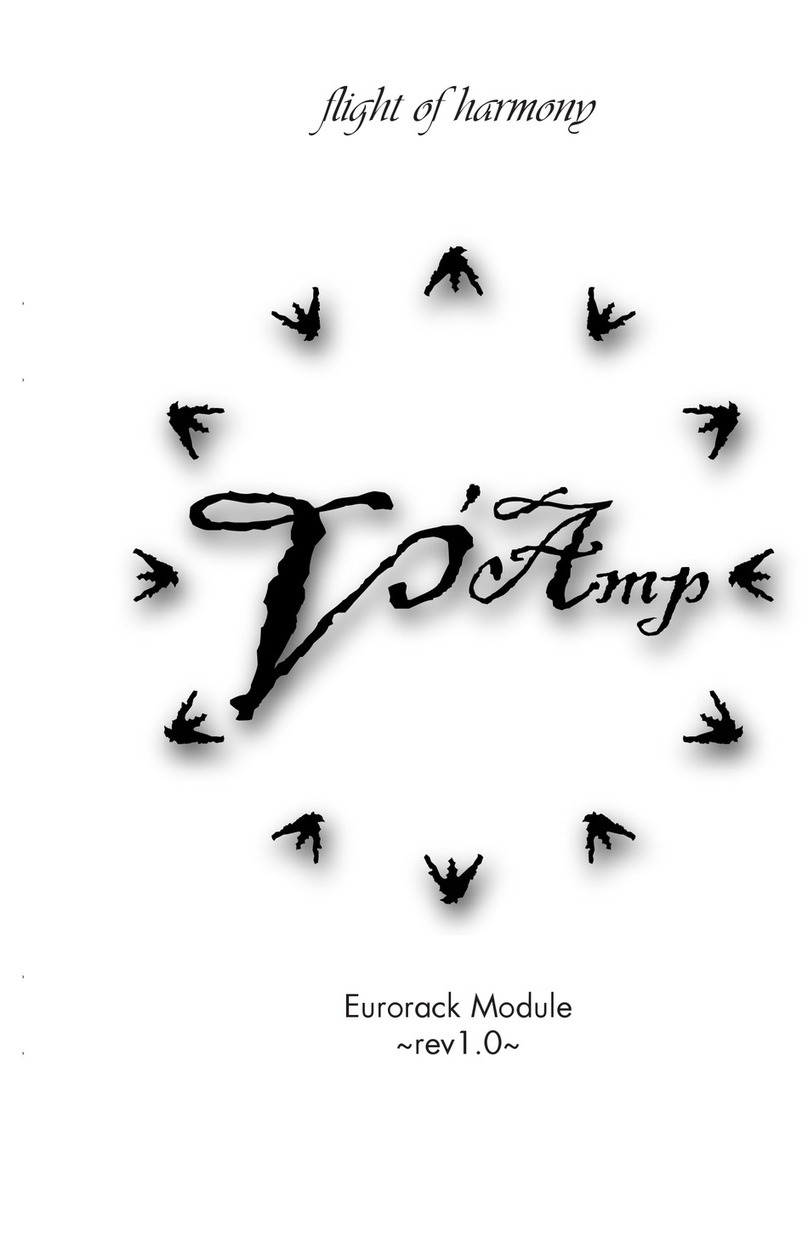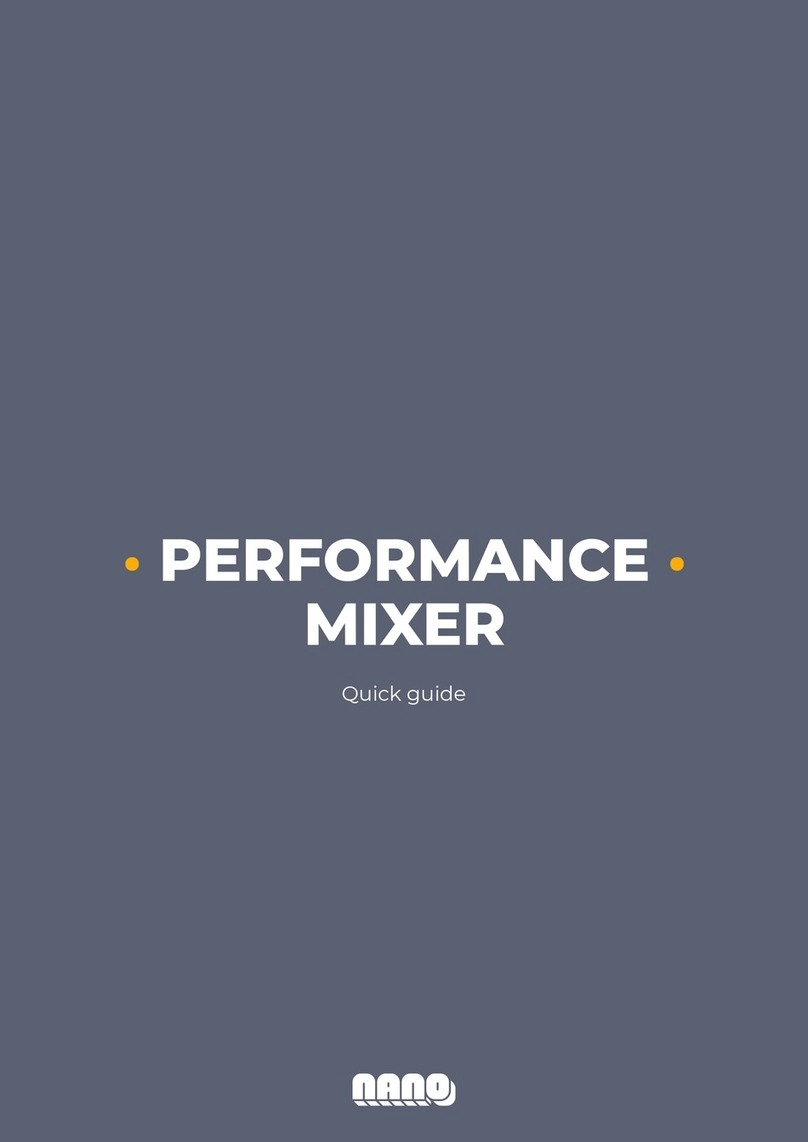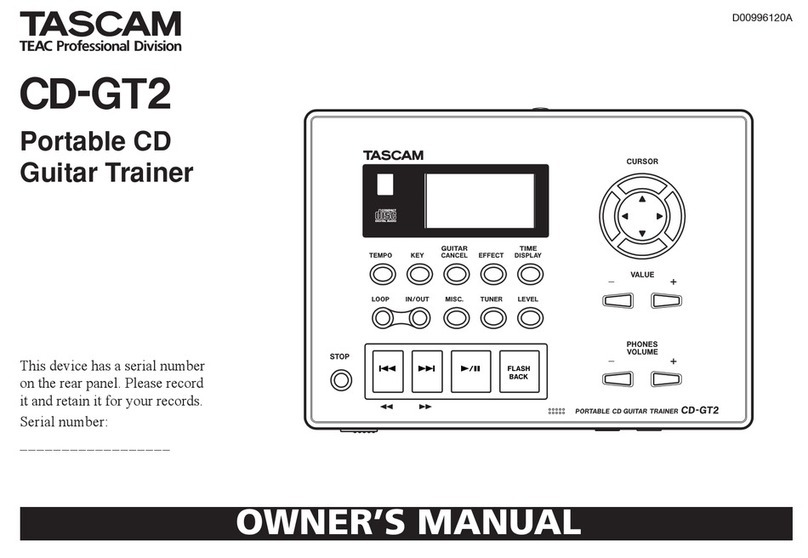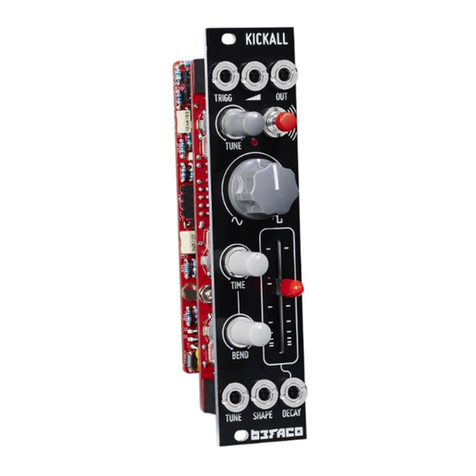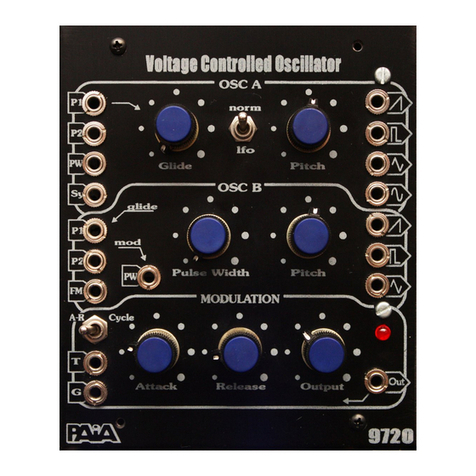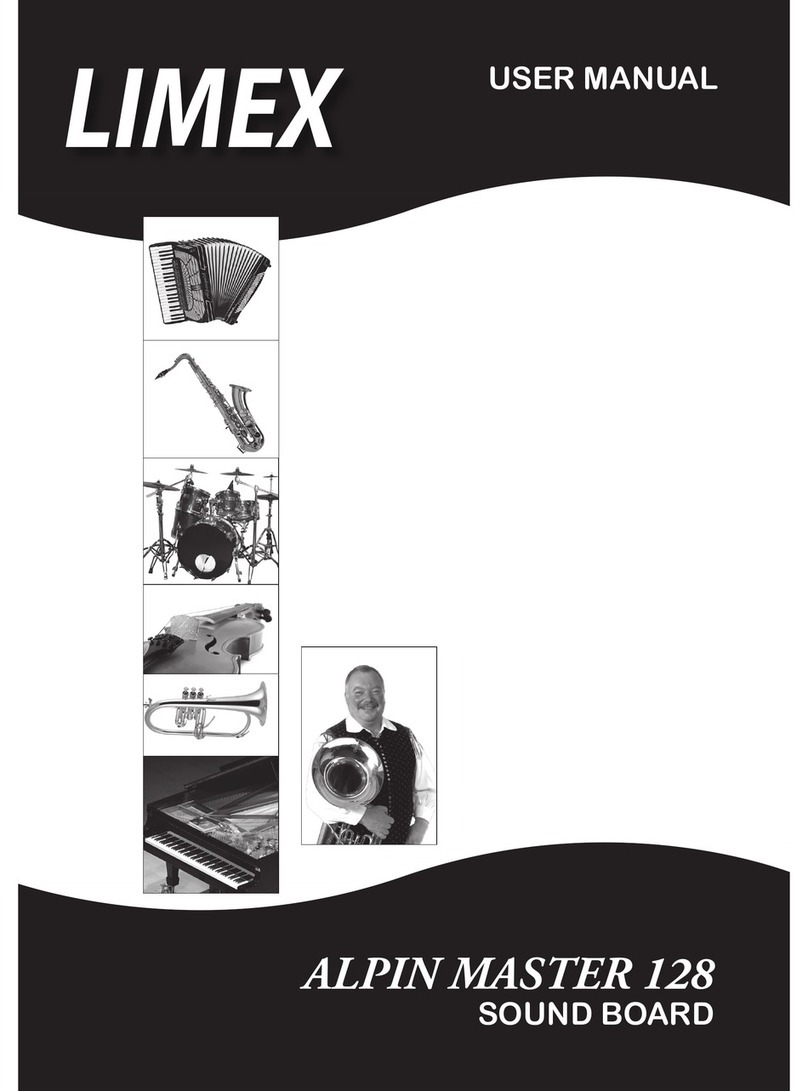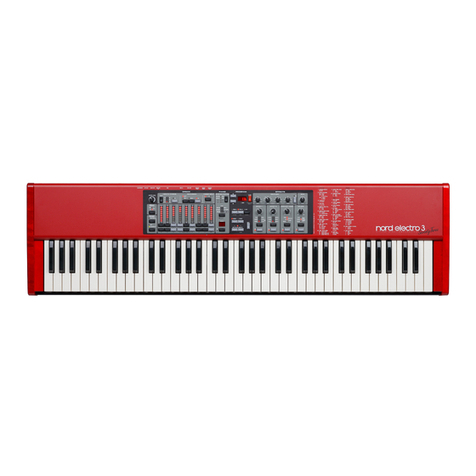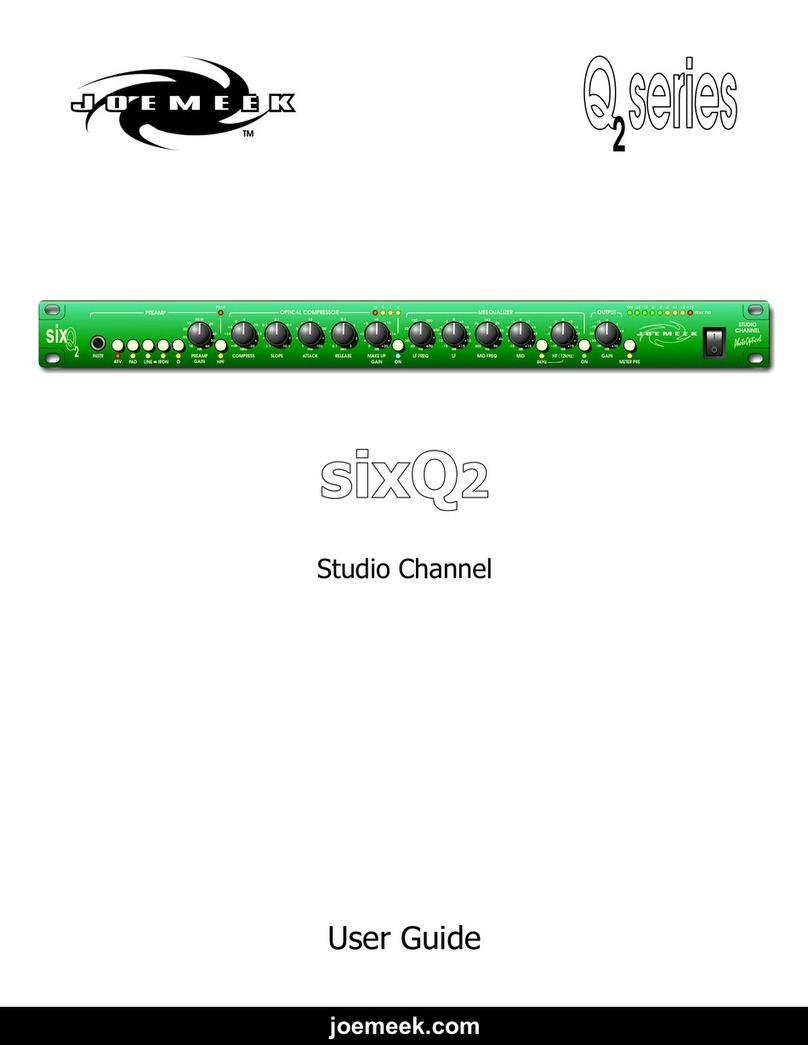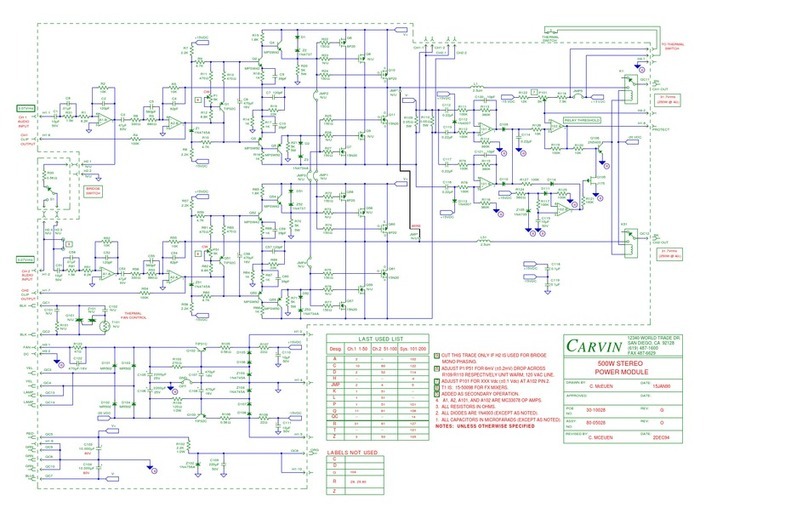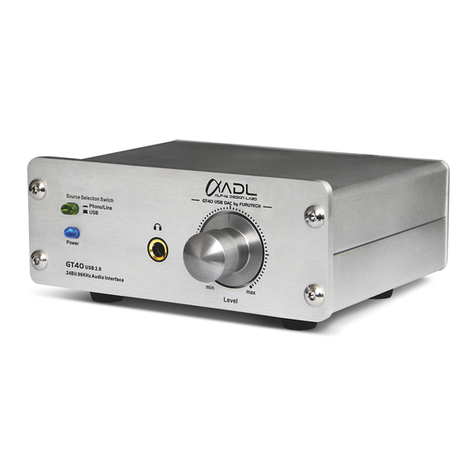Preamp/Multieffect Units and ADIG-ST
Using a shielded instrument cable, connect the stereo output of your preamp or multieffect unit to the
INPUT – CHANNEL 1 and INPUT – CHANNEL 2 sockets. The LINE/SPKS switch should be set to
LINE. To connect to the Microphone inputs of a PA or studio mixing desk, use balanced microphone
cables (XLR) from the XLR outputs BALANCED – CHANNEL 1 and BALANCED – CHANNEL 2. To
avoid overdriving the mixing desk inputs and reduce any signal noise, press the PAD 20dB switch.
This cushions the input signal by a factor of 10. If however the mixing desk already has a PAD-switch,
this should be used rather than the switch on the ADIG-ST.
Balanced microphone cables (XLR) should be used for all connections in order to cover long cable
distances without loss of signal quality. The BALANCED OUTPUT delivers a high enough line level
signal to directly drive a power amplifier.
Connecting several pieces of equipment together with differing chassis potentials can cause ground
loops resulting in a disturbing humming noise. There is a complete galvanic isolation between the
inputs and outputs of the ADIG-ST, nevertheless the LIFT/GND switch allows a further protection
against this happening.
The UNBALANCED OUTPUTS may be used as a line-out to connect to a monitor amplifier, or to the
sound card of a computer for HD recording.
Guitar Amplifier and ADIG-ST
Your guitar amplifier may have a line-out socket, which you should connect as above.
Normally however, the amplified sound is shaped not only using the tone controls, but also overdriving
the amplifier. In this case the ADIG-ST should be hooked up between amplifier and loudspeaker.
Connect a loudspeaker cable (NOT an instrument cable) from the speaker output of the amplifier to
the INPUT of the ADIG-ST. The switch beside the input socket should now be set to SPKS. A tube
amplifier must only be operated with an output load resistance. This means a loudspeaker box must
be hooked up to the THRU jack. If you don’t want a loudspeaker then use a Loadbox (dummy load).
NEVER operate a tube amplifier without some sort of Loadbox, as this will lead to massive and
permanent damage to the amplifier. We cannot be held responsible for any damage caused by faulty
wiring or ignoring this warning!
Check all wiring and connections before switching on!
If the amplifier has a separate, parallel loudspeaker output, this can be directly hooked up to the
INPUT of the ADIG-ST using a loudspeaker cable. The amplifier loudspeaker should be left connected
as usual, with the output impedance switch set to the appropriate value for the loudspeaker (4/8/16
Ohm). The input impedance of the ADIG-ST is so high that it will in no way influence the normal
amplified sound.
Tip! If you are not using both channels of the ADIG-ST, link the THRU - CHANNEL 1 socket to the
INPUT - CHANNEL 2, then you can use the controls of both channels to optimize the separate “clean”
and distorted sounds. Feeding the two outputs through a Switching System/ Looper allows you to
alternate between the two different sounds.
Switches and Controls
After everything is connected together, switch each piece of equipment on, leaving the ADIG-ST till
last. All faders on the mixing desk should be turned down. This applies to all equipment connected to
the outputs of the ADIG-ST, as extreme switching noise eventually causes loudspeaker damage.
Configure your Preamp/Multieffect unit or amplifier to your normal sound settings.
If your preamplifier has an output switching choice of –10db or 0/+6dB, then use the 0/+6dB position,
otherwise set the preamp output control (Master Volume) approximately in the middle position. The
usual start settings on the ADIG-ST are as follows: FULL RANGE: completely off (counter clockwise
position),
VOICING: LOW and HIGH in the middle position,
COLOUR: switch depressed to LITE. Now turn the FILTER VOLUME control up until the mixer desk
input (using PFL/SOLO switch) has an adequate level.

